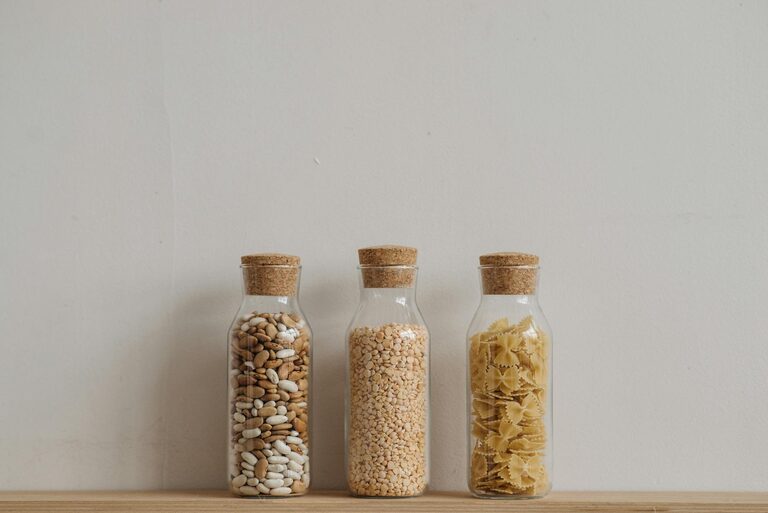
Reducing food waste at home is not only good for your wallet but also plays a significant role in protecting the environment. Each year, millions of tons of edible food are thrown away, contributing to greenhouse gas emissions and wasting precious resources. Fortunately, with a bit of planning and mindful habits, you can make a big difference. In this post, we will explore practical strategies to help you cut down on food waste and use your groceries more efficiently.
Why Reducing Food Waste Matters
Before diving into the ways to reduce food waste, it’s helpful to understand why it matters. When food is wasted, all the energy, water, and effort used for production, transportation, and storage also go to waste. Additionally, food waste in landfills produces methane, a potent greenhouse gas. By reducing food waste, you can:
– Save money by using what you buy
– Support sustainability and reduce your environmental impact
– Improve your household’s food habits and meal planning
Now, let’s look at how you can take practical steps to reduce waste at home.
Plan Your Meals and Shopping
Make a Weekly Meal Plan
Planning your meals for the week helps you know exactly what ingredients you need, reducing impulsive purchases and excess food. Write down meals you want to prepare, considering what you already have in your fridge or pantry.
Create a Shopping List
Based on your meal plan, create a detailed shopping list. Stick to the list while shopping to avoid buying items that may go unused.
Buy Smart: Fresh vs. Frozen
Some fresh foods spoil quickly. Consider buying frozen fruits and vegetables which have a longer shelf life and are often frozen at peak freshness. This helps you reduce waste and have ingredients on hand for longer periods.
Store Food Properly
Organize Your Fridge and Pantry
Keep your fridge and pantry organized so you can easily see what you have. Use clear containers and label leftovers with dates. Place older items at the front to remind you to use them first.
Understand Food Storage Guidelines
Learn how to store different foods properly—for example, keep herbs fresh by wrapping them in damp paper towels, or store bread in a cool, dry place instead of the fridge to prevent staling.
Control Temperature Zones
Your fridge may have variable temperature zones. Store dairy and meats in the coldest areas and fruits and vegetables in designated crisper drawers to keep them fresh longer.
Use Leftovers Creatively
Repurpose Leftovers
Leftovers don’t have to be boring. Use vegetables from dinner in soups or stir-fries the next day, or turn cooked meat into sandwiches or salads. This reduces food waste and makes cooking easier.
Freeze Extra Portions
If you cook large meals, freeze extra portions for later. Label them with the date to keep track. This saves time on busy days and reduces waste from unfinished food.
Pay Attention to Expiration Dates
Understand Date Labels
Labels like “best before” and “use by” can be confusing. “Best before” indicates quality, not safety, so many foods are still good to eat after this date. “Use by” is more about safety for perishable foods. Check each item and trust your senses—look, smell, and taste carefully.
Use Older Items First
Make a habit of using older items before newer ones. Rotate stock in your pantry so the oldest products are in front and used first.
Compost Food Scraps
Even with the best efforts, some food scraps are inevitable. Composting is a great way to reduce your household waste and enrich your garden soil with organic matter.
Start a Compost Bin
You can compost vegetable peels, coffee grounds, eggshells, and more. Avoid composting meat or dairy, as they attract pests. Composting can be done outdoors or with a small indoor composting bin.
Use Compost in Your Garden
If you have a garden, use the finished compost to fertilize plants. This closes the loop and turns food scraps into a valuable resource.
Shop and Eat Seasonally
Eating fruits and vegetables that are in season often means fresher produce with a longer shelf life. Seasonal foods also tend to be less expensive and more flavorful.
Visit Local Farmers Markets
Local markets usually have seasonal and fresh produce, often grown nearby. Buying from them supports local farmers and reduces the carbon footprint associated with long-distance food shipping.
Tips for Reducing Food Waste in Specific Areas
Bread
Freeze extra bread and toast slices directly from the freezer as needed. Use stale bread for breadcrumbs or bread pudding.
Fruits and Vegetables
Use imperfect produce in smoothies, soups, or stews. Peel or trim bruised parts instead of discarding the entire item.
Dairy
Freeze cheese if you won’t use it right away. Turn yogurt that is nearing its expiration into smoothies or use it in baking.
—
Reducing food waste at home doesn’t require drastic changes; small, consistent steps can have a meaningful impact. By planning meals, storing food properly, using leftovers creatively, and composting scraps, you save money and contribute to a healthier planet. Try incorporating a few of these tips into your routine and enjoy the benefits of a waste-conscious kitchen!



